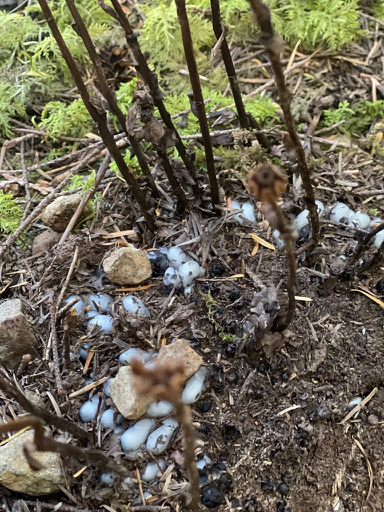By Dave Rugh
Pinnipeds, literally webbed feet, are our neighbors that spend much of
their lives in marine waters. Most have been increasing in abundance
since 1972, thanks to the Marine Mammal Protection Act. However,
concerns about salmon declines – linked to declines in southern
resident orca – have sparked debate about culling seals and sea lions
because they eat so many salmon.

Steller sea lions, also known as northern sea lions, range across the
North Pacific. There are more than 60,000 on the eastern side of the
Pacific Ocean. The photo here shows a couple dozen crowding Craven
Rock east of Marrowstone Island. More than 250,000 California sea
lions are found along most of the western coast of North America.
Adult males are notable for their protruding crest, giving their heads
a high, domed appearance. Wendy’s photo shows a sea lion breaking
apart a salmon.

Harbor seals in the Salish Sea are one of the most concentrated
populations in the world, and this is the most common of marine mammal
species, with over 10,000 locally. This photo shows a haulout on
Protection Island.

Northern Elephant Seals almost went extinct by 1910 due to
over-hunting, but they’ve made an amazing comeback and are now doing
well from Alaska to Baja California, with an estimated 150,000
individuals. Recently, local birthings have been noted on Race Rocks,
Whidbey Island, and Protection Island. The photo shown here is of a
young elephant seal lacking the long proboscis so characteristic of
the adults and for which these seals got their name. These are the
largest seals in North America.










